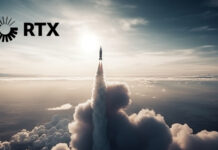NASA astronaut Victor Glover, along with representatives from NASA and the International Space Station U.S. National Laboratory, will participate in a virtual panel discussion at 1 p.m. EST Wednesday, Feb. 2, to highlight the orbiting laboratory’s research capabilities, and share space research and technology development progress.
Also Read: China Airlines and Boeing Announce Order for Four 777 Freighters
Destination Station is designed to inform participants how space station research benefits lives on Earth, inspires the next generation of researchers and explorers, and enables a robust marketplace in low-Earth orbit. This will be the third virtual version of the event due to the coronavirus pandemic. NASA has hosted in-person Destination Station events around the country for a decade, and the virtual editions enable potential researchers and the public around the globe to tune in to this free forum.
Glover, a California native, recently spent six months aboard the International Space Station as part of NASA’s SpaceX Crew-1 mission, the first crew rotation mission aboard a commercial spacecraft. He was the Crew Dragon pilot.
Throughout their mission, Crew-1 astronauts contributed to scientific investigations and technology demonstrations, from studying protein crystal development to advance new drug discoveries, to demonstrating robotic assistant technologies, their work advances exploration of the universe while bringing benefits back to Earth. They also grew crops in both the Advanced Plant Habitat and Veggie plant growth facilities, and conducted tests of a new method for producing semiconductor crystals.
The astronauts contributed hundreds of pictures of Earth as part of the Crew Earth Observation investigation, one of the longest-running investigations aboard the space station, which contributes to tracking of natural disasters and changes to our home planet. The crew also tested a new tape dispenser, designed and produced by students as part of the High Schools United with NASA to Create Hardware, during the mission.
Glover completed his first four spacewalks during the mission to connect cables on the recently-installed Bartolomeo science platform, prepare the station for upcoming solar array upgrades, service the station’s cooling system, and complete other station maintenance tasks.
Research aboard the unique microgravity laboratory is split between advancing science and technology to enable NASA’s missions to advance human spaceflight to the Moon and Mars and provide benefits to life on Earth through ISS U.S. National Laboratory research, which the Center for the Advancement of Science in Space manages.




